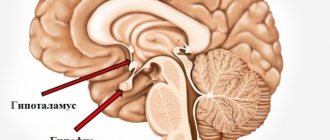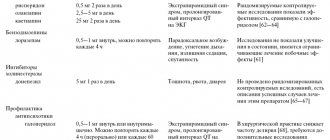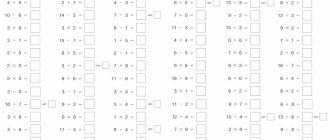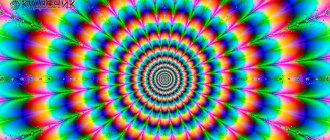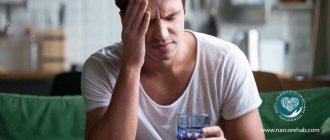Self-regulation is an important part of the human psyche, and it is useful for every person to master it. It's about managing your mental and emotional state, and this is undoubtedly a very useful quality. By influencing oneself with mental images, controlling breathing, or using other techniques, a person can “come to his senses” quite quickly. So how do you master self-regulation?
What is self-regulation
Let us take a closer look at the concept of “self-regulation” in psychology and pedagogy.
In psychology
Self-regulation means assessing the situation and adjusting one’s own activity directly by the individual. As a result, the results of the action are adjusted. There is voluntary and involuntary self-regulation.
Voluntary form is characterized by conscious control of behavior in order to achieve the desired. With the help of conscious self-regulation, a person develops individuality. Involuntary is more aimed at survival and self-preservation - subconscious defense mechanisms are triggered.
The norm is considered to be a situation where self-regulation is formed and develops in parallel with personal maturation. If there is no personal development, a person does not learn to bear responsibility, then the situation worsens. The development of self-regulation is impossible without personal growth.
In adulthood, self-regulation helps subordinate emotions to intellect, but in old age the balance shifts again towards emotions.
Aspects influencing self-regulation
:
- external environmental conditions;
- personality traits;
- features of the relationship between the individual and the environment;
- goals of activity.
Simply put, self-regulation is socially acceptable methods of dealing with feelings and emotions, as well as accepting norms of behavior, respect for others, and adequate reactions.
In pedagogy
Teachers often have to be in stressful situations related to children, their parents, presentation of new material, and so on. It is especially important for a teacher to master relaxation and mental self-regulation methods. One of them can be called autogenic training - work with self-hypnosis and self-tuning of the psyche, based on the use of the relaxation process. It becomes easier to manage emotions and restore performance.
How to master auto-training
?
- learn self-hypnosis
: focus attention on a separate object (your entire body or its individual components); - visualize
the contents of self-hypnosis formulas as clearly as possible (“my hands are relaxed, I am calm”, etc.); - periodically achieve complete relaxation of your arms, legs, and torso
. Relaxation of skeletal muscles and a low level of wakefulness in the brain have a direct connection with calming the nervous system and reducing emotional tension.
Teachers are advised to pay special attention to self-regulation and influence themselves with effective language. There are many auto-training methods that help you develop the necessary skills. Some educational institutions include psychological relief rooms, where the teacher has the opportunity to relieve tension caused by a certain irritant. Popular methods of pedagogical self-regulation: bibliotherapy, music therapy, occupational therapy, cultivating optimism, and so on.
Lemeschenko M.Yu.
ON THE QUESTION OF SELF-REGULATION OF PERSONALITY
Tambov, Russia [email protected]
In the theory of science, the concept of personal self-regulation is an explanatory concept, that is, designed to explain the mechanisms of generating special human actions based not so much on desires, but on the possibilities of a reasonable individual decision about their purposeful implementation. This is due to the fact that the realities of ordered subjective activity based on awareness of one’s own current state, reflection and autodynamic resources have not yet been fully studied. Until now, certain difficulties have arisen in naming the phenomenon as such, associated with the lack of a unified approach to viewing the problem and the fragmentation of its theoretical descriptive constructs. And although the psychological content of the concept of self-regulation of the individual almost always implies the combination of the active need of the subject to initiate the inclusion of internal logic with the desire that ensures the process of choosing a voluntary action and endowing it with an incentive controlling force, nevertheless, certainty, logic and clarity in the understanding of its structure are still are missing. Even taking into account the long history of experimental research, this question remains open.
In Russian psychology, ideas about personality self-regulation developed gradually. Initially, they expressed the idea of the unity of consciousness and activity, in the sense that a person, as a subject, could only be realized in various types of activity, and the process of cognition of the surrounding world could be regulated exclusively by consciousness [1].
Such views on the problem began to be seriously discussed in the second half of the twentieth century under the influence of physiology and cybernetics in the context of the structural-functional approach on the one hand and the activity approach on the other. The first involved the designation of structural and functional models of regulation, the second focused on the analysis of activity. Based on the identified features, the general patterns of restructuring the dynamic personality stereotype were considered in accordance with the requirements of the environment and social realities. As a result, two specific ways of modeling reality were identified - activity and regulation of this activity, and at each level of organization of the psyche.
The most complete structural-functional model of conscious regulation was described in the scientific school of O.A. Konopkin and on its basis developed the concept of conscious self-regulation of a person’s voluntary activity when achieving set goals in various types of activities. The fundamental achievement in it was a system for the implementation of the subjective integrity of the individual, in which the emphasis was placed on purposeful activity having a certain meaning, in relation to which the person acted “as an initiator and even a creator” [2]. This meant that a person, being the subject of his own activity, had the opportunity to select conditions corresponding to a specific task, while analyzing methods for solving it and evaluating the results, adjusted for the possibility of correcting executive actions.
Within the framework of the structural-functional approach V.I. Morasanova was one of the first to clearly formulate the hypothesis that personal characteristics influence activity through established individual methods of self-regulation of activity [3]. In this vein, she studied individual methods of regulation typical for a person, which consistently manifest themselves in various situations of activity and other types of mental activity, and wholly characterize the style of self-regulation. In her opinion, only the individual characteristics of self-regulation reflect how a person plans and programs the achievement of a goal, takes into account significant conditions of the surrounding reality, evaluates and adjusts his own activity, striving to obtain subjectively acceptable results.
An interesting model of human regulatory experience was proposed by A.K. Osnitsky, starting from the importance of understanding knowledge about the possibilities of self-regulation, as self-management of one’s own life strategies and solving assigned problems [4]. It is a structured system of knowledge, skills and experiences that influence the successful regulation of activity and behavior. The main components of his model were the experience of reflection, value-motivational experience, experience of habitual activation, operational experience and experience of cooperation. The components of self-regulation were presented to them in the form of goals, mastered skills, images of control influences, habitual assessments of the experience of success and erroneous actions. Reflection acted as a mechanism facilitating the synthesis of directly sensitive assessments and logical interpretations, and the process itself was considered in the context of living, feeling, overcoming, enduring and reviewing the situation. That is, according to Osnitsky, self-regulation of the individual in its structural and functional aspect is the process of neutralizing diverse initial information uncertainty to a level that allows effective implementation of purposeful activities.
The structural-functional approach became the basis for the scientific research of A.P. Kornilov, who assessed the development trend of the concept of self-regulation of the individual and indicated that self-regulation is understood as a process of meaning formation, implying self-reflection and a system of experiences in the context of self-identification, where self-regulation is a manifestation of the regulatory function of self-awareness. In a similar vein, this phenomenon was considered by R.R. Sagiev, V.I. Stepansky and others.
Thus, within the framework of the structural-functional approach, modern researchers have been able to identify an abstract-logical model of self-regulation, which has made it possible to universalize the functional blocks and information links involved in regulatory processes. In the words of O.A. Konopkin, they attempted to describe the information aspects of self-regulatory personal components, abstracting from the specifics of specific mental processes and phenomena that reflect and record information presented by consciousness with its specificity of general patterns of individual regulation of reality.
Studies of personality self-regulation within the framework of the activity approach were carried out by M.I. Bobneva, G.V. Sukhodolsky, E.V. Shorokhova, V.A. Yadov and others, according to whom, it is, first of all, a systemically organized process of a person’s internal mental activity of initiating, building, maintaining and managing various types of activities of the individual related to the achievement of the goals he accepts [5].
From the perspective of the activity approach G.S. Nikiforov described self-regulation as “a person’s conscious influence on his inherent mental phenomena, processes, properties, states, activities performed, his own behavior in order to maintain, preserve or change the nature of their course” [6].
According to V.P. Boyarintsev, self-regulation can be defined as a mechanism for ensuring a person’s internal activity by various mental means, where activity and self-regulation act as two complementary aspects - activity expresses variability and movement, and self-regulation ensures stability and stability of the activity itself.
Based on the activity theory of G.Sh. Gabdreeva proposed a multi-level system of regulation of life activity, where by life activity she meant all possible manifestations of human activity. In its system, two blocks are distinguished: an external block of regulation, which ensures the choice of optimal personal functioning and mental state, and an internal block, which determines the processes of maintaining homeostasis in the relatively closed part of the system, which is responsible for the adaptive activity of the body.
Thus, in the context of the activity approach, personal self-regulation is the subject’s individual control over his own actions, combining in a certain direction the search for specific regulating personal factors [7].
The subject-activity approach to the study of personal self-regulation highlighted the problem of its psychological mechanism as the most important systemic subjective quality. In this regard, the question was raised of identifying personal determinants that act as unique modulators of the subject’s individual activity in the process of nominating, organizing and achieving targets. The activity of the subject from such a position was mediated by an integral system of individual regulation - a conductor of the dynamic and meaningful aspects of the personality with its conscious and unconscious stereotypes. In addition, mental means of regulating goal achievement were studied from the point of view of not only their interaction, but also their functional role in the implementation of holistic regulation. At the same time, researchers took into account the fact that individual-typical methods of self-regulation, along with special and general abilities, are prerequisites for the formation of many individual styles in specific types of activities. In this regard, it is the possibility of changing the degree of subjective activity and, on its basis, overcoming the negative features of self-regulation for achieving a goal that acted as an essential characteristic of a person as a subject of achieving a goal. Its determinants then became not so much dynamic as substantive aspects of personality, the structure of which is formed in the process of life, is updated when solving a specific problem and can be modulated as the degree of individual self-regulation and regulatory profile.
A significant contribution to the development of the problem of personal self-regulation within the framework of the subject-activity approach was made by N.I. Yarushkin, who described in detail its psychological patterns and mechanisms. According to his concept, the social behavior of an individual is regulated by interacting processes of self-regulation and self-organization, reflecting the object-subject relationship of the individual with his micro and macroenvironment and performing various functions: self-regulation ensures the socio-psychological adaptation of the individual, and self-organization ensures its relative autonomy, independence and self-realization. The system-forming psychological mechanism for regulating the social behavior of an individual, according to the author, is its focus on self-regulation and self-organization, determined by the peculiarities of the interaction of multi-level personal structures. In this case, the control process is revealed as a comparison of the controlled quantity with a given value, but on the condition that if it deviates from the given value, a signal must be sent to the control object that restores the controlled quantity. This means that the regulation process presupposes the presence of at least two components: a regulated object and a regulatory system, or simply a regulator, which can be either organically integrated into the process itself, or relatively independent. In the first case, order is achieved spontaneously through interaction between its elements or through self-regulation. In the second case, orderliness is the result of external influences or regulation, which generates the third integral component of the self-regulation process, namely the method and means of its implementation.
Summarizing the essence of the above, it should be noted that the subject-activity approach made it possible to approach the study of personality self-regulation holistically, producing a qualitative and quantitative analysis of human activity as a subject of purposeful activity [8].
Within the framework of the systems approach, self-regulation of the individual has become a system-forming feature of the holistic structure of the unity of the organism with personal manifestations. M.K. Akimova, D.N. Menitsky, V.M. Rusalov, O.Yu. Osadko considered personal self-regulation as a dynamic system, combining in it psychophysiological and psychological mechanisms of self-organization.
L.V. Safonova studied personal self-regulation in the systemic unity of aspirations, reflection and self-esteem, that is, in the system of cognitive and affective components. That is, self-regulation of the individual in its systemic manifestation covers all systemic qualities of a person, along with direction and activity as such.
B.V. was also guided by the principle of consistency. Zeigarnik. Along with the mental level of self-regulation, he distinguishes the operational-technical level, which ensures the conscious organization and correction of the subject’s actions, and the personal-motivational level at which the motive of one’s own activity is realized, the possibility of managing the motivational sphere appears and a situation is created in which it is possible to be the master of one’s life.
Personal self-regulation as an independent unit of human mental activity was studied by A. Bandura within the framework of the reciprocal determinism of social cognitive theory . In his opinion, there are two groups of mutually influencing factors of self-regulation - external and internal, and a person has the opportunity to somehow influence external factors in order to monitor his own behavior and evaluate it in the light of near and distant goals. As external factors of self-regulation, he identified certain standards by which an individual evaluates his behavior. These standards are formed not only by external forces, but also by environmental phenomena that seriously determine certain personal properties. In addition, external factors of self-regulation are reinforcements of human activity, the so-called internal rewards, which are not always sufficient, since almost each of us needs incentives coming from the external environment that are stronger than self-satisfaction. Bandura viewed them as reinforcements from society (material support or the approval and encouragement of others). A person also needs small rewards that he gives himself in the process of achieving intermediate goals. However, according to Bandura, if a person rewards himself for inappropriate actions, then the other side of the coin is penalties directly from the environment. Therefore, when what we do does not meet our own internal standards, we try to refrain from self-reward and in this case internal or personality factors are associated with three necessary conditions: self-observation, the process of making judgments and active response to oneself. It is these factors that are the most important characteristic of the human personality - personal self-regulation, which actively shapes individual behavior and the development of certain qualities focused on achieving a set goal [9].
Currently, in domestic and foreign literature, the concept of self-regulation is found frequently and is replete with ambiguity and a large number of interpretations. Typically, self-regulation is understood as a process that ensures the stability of the system, its relative stability and balance, as well as the individual’s purposeful change in the mechanisms of various psychophysiological functions related to the formation of special means of controlling activity. Self-regulation also means maintaining the stability of the psyche as an integral system in relation to destructive external influences and subordinating the content and structure of activity to the goals accepted by the individual. Self-regulation is also interpreted as a voluntary and involuntary mental and personal mechanism of self-organization, coordinating the pace, rhythms and direction of activity with certain conditions and events in time and space. There is a definition of self-regulation as a process of reducing diverse initial information uncertainty to a level that allows effective purposeful activity and generalization of ways of one’s own personal development and moving forward along the path of harmonizing individual capabilities with internal needs and capabilities. Self-regulation also refers to integrative mental phenomena, processes and states that ensure the self-organization of various types of human mental activity, his integrity of individuality and the formation of being. The Great Soviet Encyclopedia explains self-regulation as the property of biological systems to automatically establish and maintain at a certain, relatively constant level certain physiological or other biological indicators. The Brief Psychological Dictionary defines it as the expedient functioning of living systems of different levels of organization and complexity. That is, there is no single interpretation of this concept, but A.G. very accurately outlined the psychological essence of the phenomenon. Asmolov, emphasizing that self-regulation reflects the problem of “a changing personality in a changing world” [11].
BIBLIOGRAPHY:
- Self-regulation and prediction of social behavior of an individual: A dispositional concept. 2nd expanded ed. - M.: TsSPiM, 2013. - 376 p.
- Konopkin O.A. Mental self-regulation of human voluntary activity (structural and functional aspect) // Questions of psychology. 1995. No. 1.S. 5-12.
- Morosanova V.I. Individual style of self-regulation. - M.: Nauka, 2001.
- Osnitsky, A.K. The role of conscious self-regulation in the educational activities of adolescents // Questions of psychology. - 2007. - No. 3. - P. 42-51.
- Bobneva M.I. Social norms and regulation of behavior. - M.: Nauka, 1978. 271 p.
- Nikiforov G.S., Filimonenko Yu.I., Polshin A.K. Psychological aspects of self-regulation of states. L., 1986.
- Orlov S.V. Man and his needs: Textbook. - St. Petersburg: Peter, 2006. -160 p.
- Shadrikov V.D. On the subject of psychology (the world of human inner life) // Psychology. Journal of the Higher School of Economics. 2004. T. 1, No. 1. P. 5–19.
- Bandura A., Adams NE, Hardy A. B, & Howells GN, (1980) Test of the generality of self-efficacy theory. Cognitive Therapy and Research, 4, 39-66.
- Leontyev A.N. Activity. Consciousness. Personality. – M.: Smysl, Publishing House 2004.
- 11. Asmolov A.G. Personality psychology: Textbook. M, 1990, 367 p.
Theories of mental self-regulation
Let's consider popular theories of self-regulation in psychology.
System activity theory
The author of the theory is L. G. Dikaya. The concept assumes that psychological self-regulation is considered as a system and as an activity related to the individual’s professional environment and adaptation.
As a system, self-regulation can be considered in the context of the individual’s transition from unconsciousness to conscious and automatic forms.
The author has identified several levels
:
- Involuntary level
. The basis of regulation is the processes of excitation and inhibition, as well as nonspecific activity in the psyche. These reactions are uncontrollable and their duration is short. - Arbitrary level
. The need for regulation occurs in difficult life situations, emotions are involved. The reaction becomes in semi-conscious ways: increased speech and motor activity, holding your breath, muscle tension. Usually a person tries to automatically awaken himself and does not take many changes into account. - Conscious regulation
. A person becomes aware of fatigue, discomfort, tension. He can also analyze the level of severity of his condition. He decides to change the situation, and here such aspects as self-control, will, psychophysical exercises, and auto-training come into play. - Purposeful conscious level
. Clearly realizing that this can no longer continue, and the time has come to choose between psychological self-regulation, the individual, wanting to eliminate the discomfort, begins to re-prioritize and evaluate his own needs and motives. As a result, a decision is made to temporarily abandon activities and take care of one’s condition. If this opportunity is not provided, then a decision is made to continue activity in discomfort or to balance activity and self-regulation. Next comes a series of such aspects: self-persuasion, introspection, self-hypnosis, self-programming. Changes occur not only at the cognitive level, but also at the personal level.
System-functional theory
The author of the theory was A. O. Prokhorov, who considered psychological self-regulation as a transition from one mental state to another, associated with ideas about the desired mood. A conscious image helps to activate self-control and corresponding motives.
Having resorted to conscious methods to achieve what he wants, a person usually uses different methods and goes through more than one intermediate state. Subsequently, a functional structure of personality self-regulation is formed - a conscious reaction to conflict situations.
A. O. Prokhorov noted that self-regulation is a transition from one state to another, which is achieved through the connection of mental properties and internal switching of work.
The more conscious the consciousness, the more successful the regulation. Also important is the clarity of formation of the desired image and the realism of perceptions and sensations. The current position is analyzed using bodily sensations, breathing, perception of time and space.
What it is
Stability depends on the ability of living multi-level systems to organize. There are several opinions about what self-regulation is, and in some ways they are similar. Differences in judgments are associated with the position from which the analyst looks at this topic. Philosophers and psychologists are most interested in the question.
Definition in philosophy
Science studies the processes of cognition and thinking, values and moral categories from the perspective of the development of society and the world as a whole. If we consider the property of control, then in philosophy self-regulation is the ability of a person to completely control himself through the primacy of consciousness.
Here it is important to choose the right position regarding your inner world:
- if the desire to manipulate them is added to the awareness of thoughts and feelings, this can lead to intrapersonal conflict;
- accepting the inner world as an integral part of oneself, respecting it is the right path to a productive life;
- when awareness of the inner world becomes the basis for changing one's own behavior, this can provoke a war with oneself.
For your information. Awareness will always prevent constructive changes in behavior. The effectiveness of self-regulation lies in the fact that a person can control his behavior, regardless of his own consciousness.
Psychologists' opinion
Dynamic, energetic, content-semantic aspects make it possible to realize and model reality. Therefore, in psychology, self-regulation is considered as one of the levels of correction of system activity.
Experts present psychological self-realization as an informational process based on mental forms of reflection of reality. In this closed loop, implementation occurs through various means: representations, images, concepts, etc. This is influenced by external factors and activities.
Taken as a basis, a goal can produce different results even with similar behavior patterns. It all depends on personal qualities, the nature of nervous activity, habits, lifestyle, and degree of organization.
Kinds
Modern practical psychology successfully uses different types of mental self-regulation to normalize the internal state of the individual.
Popular types include
:
- autogenic training, based on the use of special self-hypnosis formulas that allow you to influence body processes;
- self-education through certain exercises;
- biofeedback;
- meditation;
- visualization.
The conscious use of certain types of self-regulation begins at approximately three years of age.
- At 3-4 years of age,
involuntary motor and speech methods of self-regulation are predominant - for every 7-8 involuntary ones there is so far only one voluntary one. - Children 4-5 years old
learn emotional control through play. Involuntary methods still predominate: four to one. - By the age of 5-6 years
, the proportions are equalized one to one, and now children actively use imagination, memory, thinking and speech. - From the age of 6-7 years
you can already talk about self-correction and self-control. The proportions have changed dramatically: for every 3-4 voluntary methods of self-regulation, there is only one involuntary one. - From the age of 8
and throughout the entire period of growing up, an individual improves his methods, adopting them from those around him. - At the age of 20-40 years
, the type of self-regulation chosen has a direct dependence on human activity. Conscious volitional methods are mainly used. - A person of 40-60 years old
retains manipulations with attention, but they are gradually replaced by passive rest and bibliotherapy. - After 60 years
, passive relaxation, communication, reflection and comprehension are predominant.
The formation of self-regulation
As mentioned above, a person learns the basics of self-regulation in childhood. The process of its formation looks like this:
- From 3 to 4 years. In most cases, changes in the functional state occur involuntarily. Involuntary speech and motor methods of self-regulation alternate with voluntary or conscious ones in a ratio of 7-8 to 1.
- From 4 to 5 years. Children learn to manage their emotions through play. At this age the ratio looks like 4 to 1.
- From 5 to 6 years. The ratio of involuntary and voluntary self-regulation returns to normal (1 to 1). At this level, children have access to imagination, memory, thinking, and speech.
- 6-7 years. At this age, the child has access to such methods of self-regulation as self-control and self-correction. The ratio changes in the opposite direction. For every 1 involuntary method of psychological self-regulation there are 3-4 voluntary, conscious ones.
- The interval is 8-20 years. During this period, the teenager, and then the young man, improves the methods of self-regulation he uses, and also adopts something from those around him.
- Age from 20 to 40 years. The methods of changing the emotional state directly depend on what activity the individual is engaged in. Most often we are talking about the use of conscious methods.
- 40-60 years old. Attention manipulations are still effective. However, more and more often people are replacing them with something passive, for example, a quiet rest, a walk in nature or a trip to the library.
After 60 years, self-regulation is carried out only by passive methods. In most cases, this is communication, thinking alone, etc.
Functions
It is important to understand the basic functions of self-regulation in psychology in order to understand its value. It changes mental activity, which allows the individual to achieve balance and harmony.
In turn, this provides us with such significant advantages
:
- Containing the first negative impulses in a conflict situation
. A person who masters self-regulation methods is able to nip conflict in the bud. - Rational analysis of the situation at a time of crisis or stress
. A very important quality that improves the life of any person and those around him. - Accumulation of strength
. However, it is important not only to accumulate strength, but also to restore it, and self-regulation does an excellent job of this. - Confronting adversity
. The subsequent quality of our life and harmony in relationships with others depends on how we confront problems.
Popular methods of self-regulation
Let's look at common methods of self-regulation.
Relaxation
Everyone determines for themselves which method of relaxation is most suitable for them within the framework of self-regulation. The main goal of this method is to achieve internal harmony, relieve muscle tension and tension, and master muscle control.
Meditation
Thanks to meditation, we learn to concentrate, relax our attention and increase it. The main goal of meditation is to relieve emotional stress and distract from depressing thoughts. If you need to collect yourself and calm down, breathing techniques are often used. You can use the technique of distraction - think about anything except the annoying circumstance.
Desensitization
When desensitization is effective: intentional passivity, presentation of successful behavior, neutral attitude towards harmful factors using self-suggestion.
Autogenic training
Any auto-training is based on the relaxation mechanism. You master muscle relaxation techniques, develop the skills of sensing cold and heat in the body, increase your volitional attitude and focus on monitoring the state of the body. The main goal of auto-training is to relieve emotional and muscle tension, achieve a completely relaxed state for the development of volition.
Methods and techniques of self-regulation
How to calm down and not be nervous without resorting to taking medications? It is necessary to use methods of self-regulation of mental state.
Self-regulation is the control of the psycho-emotional state by influencing the consciousness with words, mental images, proper breathing, toning and relaxing muscles.
Self-regulation is designed to quickly calm, eliminate emotional stress and normalize the emotional background.
How to calm down without knowing special self-regulation techniques? The body and consciousness usually themselves tell you how to do this.
Natural self-regulation techniques:
- smile, laughter;
- switching attention to a pleasant object;
- support of a loved one;
- physical warm-up;
- observing nature;
- fresh air, sunlight;
- clean water (wash, shower, drink water);
- listening to music;
- singing, shouting;
- reading;
- drawing and others.
Techniques that develop the ability to manage psychological state:
- Correct breathing. You need to take a slow and deep breath, hold your breath and slowly, completely exhale, imagining how the tension goes away.
- Autotraining. Autogenic training is based on self-hypnosis. A person meaningfully repeats positive phrases many times until he believes what he is saying. For example: “I remain calm, I am calm.”
- Relaxation. Special relaxation exercises, massage, yoga. By relaxing your muscles, you can balance your psyche. The effect is achieved through alternating muscle tension and relaxation.
- Visualization. The technique involves recreating in your imagination a pleasant memory or picture that evokes positive emotions. This state is called resource. Having plunged into it, a person feels positive feelings.
Mechanism of natural self-regulation
One of the most accessible methods of self-regulation are natural regulation techniques.
There are quite a lot of them, we will list the simplest and most common ones.
:
- classical music;
- walk in nature;
- good sleep;
- humor, laughter, smiles;
- breathing fresh air;
- thinking about positive things;
- relaxed muscles;
- contemplation of a beautiful landscape;
- contemplating photos with a loved one, pleasant memorabilia;
- sunbathing;
- communication with a pleasant person.


